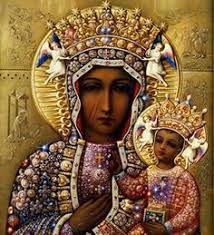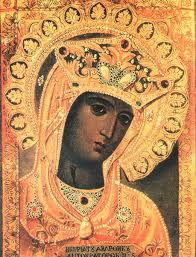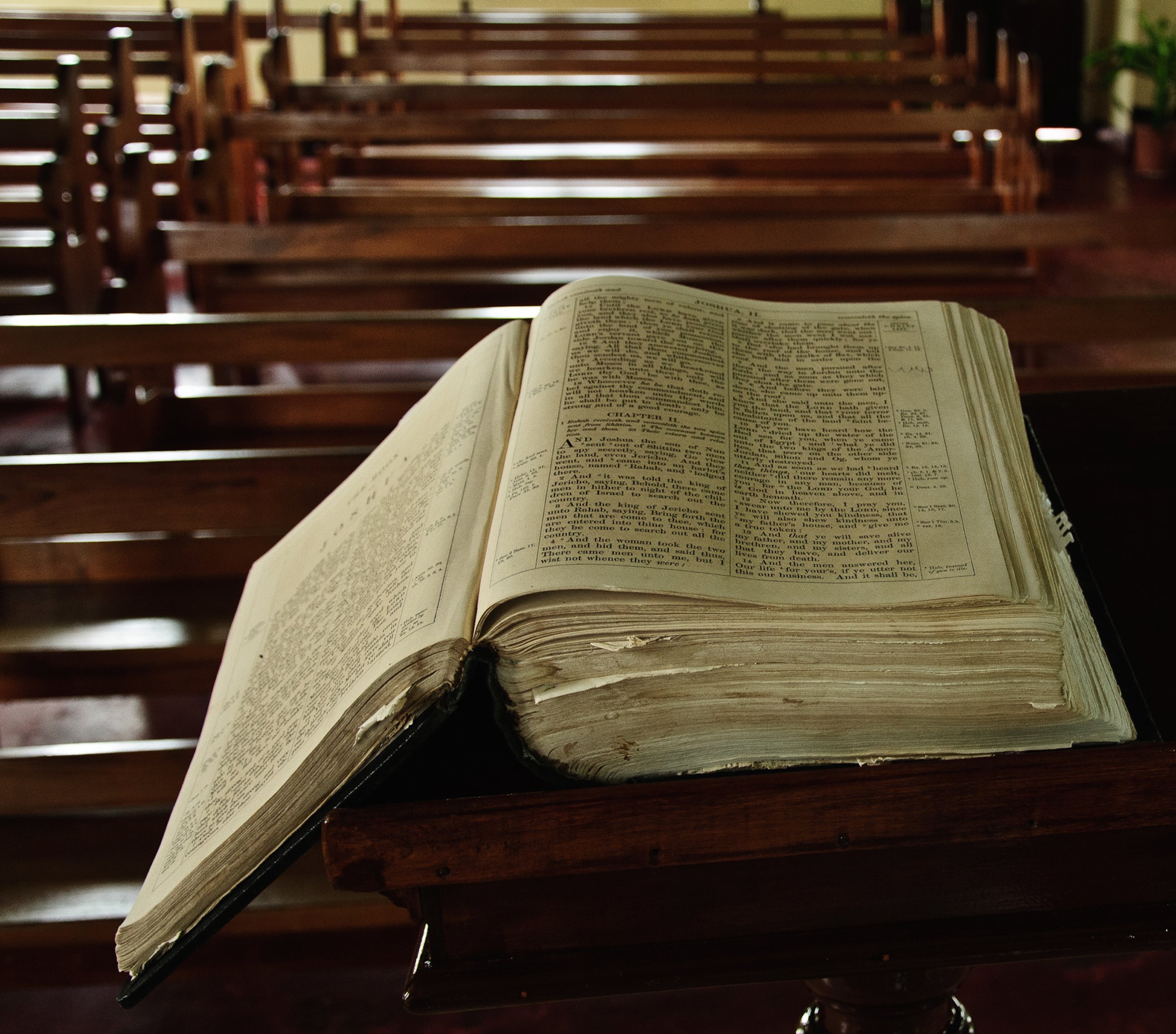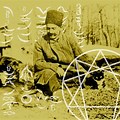In Pictures: Crowds gather to celebrate Beltain with burning of 40ft wicker man









In Pictures: Crowds gather to celebrate Beltain with burning of 40ft wicker man
Crowds gathered to mark the coming of summer with a traditional Celtic fire festival held at Butser Ancient Farm in Hampshire.
The experimental archaeology site in Waterlooville hosted the burning of a 40ft wicker man at dusk to mark the pagan quarter-day farming celebration of Beltane or Beltain, which has connections to later May Day celebrations.
The May Queen and Green Man were in attendance, as were members of the Pentacle Drummers who performed in front of the burning wicker man.
- Story by Pa Reporter: Evening Standard:
How Christian Slaveholders Used the Bible to Justify Slavery










How Christian Slaveholders Used the Bible to Justify Slavery

- During the period of American slavery, how did slaveholders manage
- to balance
- their religious beliefs with the cruel facts of the “peculiar institution“?
- As shown by the following passages — adapted from Noel Rae’s new
- book The Great Stain, which uses firsthand accounts to tell the story
- of slavery in America — for some of them that rationalization was
- rght there in the Bible.
- Out of the more than three quarters of a million words in the Bible,
- Christian slaveholders—and, if asked, most slaveholders would have
- defined themselves as Christian—had two favorites texts, one from
- the beginning of the Old Testament and the other from the end of
- the New Testament. In the words of the King James Bible, which
- was the version then current, these were, first, Genesis IX, 18–27:
-
- And the sons of Noah that went forth from the ark were Shem,
- Ham, and Japheth: and Ham is the father of Canaan. These
- are the three sons of Noah: and of them was the whole world
- overspread. And Noah began to be an husbandman, and he
- planted a vineyard: and he drank of the wine, and was drunken;
- and he was uncovered within his tent. And Ham, the father of
- Canaan, saw the nakedness of his father, and told his two
- brethren without.
- And Shem and Japheth took a garment, and laid it upon both
- their shoulders, and went backward, and covered the nakedness
- of their father; and their faces were backward, and they saw not
- their father’s nakedness.
- And Noah awoke from his wine, and knew what his younger son
- had done unto him. And he said, Cursed be Canaan; a servant of
- servants shall he be unto his brethren. And he said, Blessed be the
- Lord God of Shem; and Canaan shall be his servant. God shall enlarge
- Japheth, and he shall dwell in the tents of Shem; and Canaan shall
- be his servant. And Noah lived after the flood three hundred and
- fifty yearss.”
-
- Despite some problems with this story—What was so terrible
- about seeing Noah drunk? Why curse Canaan rather than Ham?
- How long was the servitude to last? Surely Ham would have
- been the same color as his brothers?—it eventually became
- the foundational text for those who wanted to justify slavery
- on Biblical grounds. In its boiled-down, popular version,
- known as “The Curse of Ham,” Canaan was dropped from
- the story, Ham was made black, and his descendants
- were made Africans.
- The other favorite came from the Apostle Paul’s Epistle
- to the Ephesians, VI, 5-7: “Servants, be obedient to them
- that are your masters according to the flesh, with fear
- and trembling, in singleness of your heart, as unto
- Christ; not with eye-service, as men-pleasers; but
- as the servants of Christ, doing the will of God from
- the heart; with good will doing service, as to the Lord,
- and not to men: knowing that whatsoever good thing
- any man doeth, the same shall he receive of the Lord,
- whether he be bond or free.” (Paul repeated himself,
- almost word for word, in the third chapter of his
- Epistle to the Colossians.)
- The rest of the Old Testament was often mined by pro-slavery
- polemicists for examples proving that slavery was common
- among the Israelites. The New Testament was largely ignored,
- except in the negative sense of pointing out that nowhere
- did Jesus condemn slavery, although the story of Philemon,
- the runaway who St. Paul returned to his master, was often
- quoted. It was also generally accepted that the Latin word
- servus, usually translated as servant, really meant slave.
- Even apparent abuses, when looked at in the right light,
- worked out for the best, in the words of Bishop William
- Meade of Virginia. Suppose, for example, that you have
- been punished for something you did not do, “is it not
- possible you may have done some other bad thing
- which was never discovered and that Almighty God,
- who saw you doing it, would not let you escape without
- punishment one time or another? And ought you not in
- such a case to give glory to Him, and be thankful that
- He would rather punish you in this life for your
- wickedness than destroy your souls for it in the next life?
- But suppose that even this was not the case—a case hardly
- to be imagined—and that you have by no means, known
- or unknown, deserved the correction you suffered;
- there is this great comfort in it, that if you bear it patiently,
- and leave your cause in the hands of God, He will reward
- you for it in heaven, and the punishment you suffer unjustly
- here shall turn to your exceeding great glory hereafter.”
- Bishop Stephen Elliott, of Georgia, also knew how to look
- on the bright side. Critics of slavery should “consider whether,
- by their interference with this institution, they may not be
- checking and impeding a work which is manifestly Providential.
- For nearly a hundred years the English and American Churches
- have been striving to civilize and Christianize Western Africa,
- and with what result? Around Sierra Leone, and in the
- neighborhood of Cape Palmas, a few natives have
- been made Christians, and some nations have been
- partially civilized; but what a small number in comparison
- with the thousands, nay,
- I may say millions, who have
- learned the way to Heaven and who have been made
- to know their Savior through the means of African slavery!
- At this very moment there are from three to four millions
- of Africans, educating for earth and for Heaven in the so
- vilified Southern States—learning the very best lessons
- for a semi-barbarous people—lessons of self-control,
- of obedience, of perseverance, of adaptation of means
- to ends; learning, above all, where their weakness lies,
- and how they may acquire strength for the battle of life.
- These considerations satisfy me with their condition,
- and assure me that it is the best relation they can,
- for the present, be made to occupy.”
- Reviewing the work of the white churches, Frederick
- Douglass had this to say: “Between the Christianity
- of this land and the Christianity of Christ, I recognize
- the widest possible difference—so wide that to receive
- the one as good, pure, and holy, is of necessity to reject
- the other as bad, corrupt, and wicked. To be the friend
- of the one is of necessity to be the enemy of the other.
- I love the pure, peaceable, and impartial Christianity
- of Christ; I therefore hate the corrupt, slave-holding,
- women-whipping, cradle-plundering, partial and
- hypocritical Christianity of this land. Indeed,
- I can see no rason but the most deceitful one
- for calling the religion of this land Christianity…”
- Adapted from The Great Stain: Witnessing American Slavery by Noel Rae.
- Copyright © 2018 by Noel Rae. Reprinted by arrangement with
- The Overlook Press, Peter Mayer Publishers, Inc.
- http://www.overlookpress.com. All rights reserved.
-
BY NOEL RAE : FEBRUARY 23, 2018 3:30 PM EST
Vatican excommunicates a former ambassador to the US and declares him guilty of schism
Vatican excommunicates a former ambassador to the US and declares him guilty of schism
ROME (AP) — The Vatican on Friday excommunicated its former ambassador to Washington after finding him guilty of schism, an inevitable outcome for Archbishop Carlo Maria Vigano. The conservative had became one of Pope Francis ' most ardent critics and a symbol of the polarized Catholic Church in the United States and beyond.
While once enjoying support in the Vatican and U.S. church hierarchies, the Italian archbishop alienated many as he developed a fringe following while delving deeper into conspiracy theories on everything — from the coronavirus pandemic to what he called the “Great Reset” and Russia's war in Ukraine.
The Vatican's doctrine office announced the penalty after a meeting of its members on Thursday and informed Vigano of its decision on Friday.
It cited Vigano's public “refusal to recognize and submit to the Supreme Pontiff, his rejection of communion with the members of the church subject to him, and of the legitimacy and magisterial authority of the Second Vatican Council.”
The excommunication, which Vigano incurred automatically with his positions, means he is formally outside communion with the church, and cannot celebrate or receive its sacraments. The crime of schism occurs when someone withdraws submission to the pope or from the communion of Catholics who are subject to him.
Unlike defrocking, a punitive measure that makes a priest a layman again, excommunication is considered a “medicinal” penalty and is declared in hope those who incurred it would repent and come back into communion. If that happens, the Holy See can lift the penalty.
Schisms, which have been regular in the church's 2,000-year history, are considered particularly dangerous as they threaten the unity of the church.
Vigano’s dire pronunciations about the current state of the church, amplified on Catholic social media and by ideologically friendly bloggers on both sides of the Atlantic, were an exaggerated version of the chasm between U.S. ultra-conservatives and Francis. And while Vigano enjoyed mainstream support among bishops early in his career, many quietly distanced themselves as his ideas became more extreme.
The Italian prelate, who has not been seen publicly since before 2018, knew the schism declaration was coming after the Vatican informed him of the penal process launched against him last month. He defiantly called it “an honor,” and refused to appear in person or defend himself or submit a written defense.
He did not directly respond to the schism declaration on Friday on X, his usual forum. Shortly before the Vatican decree was made public, he announced he would be celebrating a Mass on Friday for those who have been supporting him and asked for donations.
Vigano burst onto the public scene in 2012, during the first so-called Vatileaks scandal, when Pope Benedict XVI’s butler leaked the pontiff’s private papers to an Italian journalist to try to draw attention to corruption in the Holy See.
In some of the leaked letters, Vigano, then the No. 2 in the Vatican City State administration, begged the pope not to be transferred after exposing corruption in the awarding of Vatican contracts that cost the Holy See millions of euros (dollars).
The entreaties did not work. By the time the letters were published, Vigano was appointed the Vatican’s ambassador to the U.S. — a prestigious post but one that took him far from Rome and out of the running to one day be a cardinal.
Vigano reappeared on the scene during Francis’ 2015 visit to the U.S., which as nuncio he helped organize. Everything was going fine until Vigano arranged for Kim Davis, a Kentucky clerk at the center of the U.S. gay marriage debate, to be present at the Vatican residence to greet Francis, along with many other people.
After the visit, Davis and her lawyers claimed the encounter with Francis amounted to an affirmation of her cause denying marriage licenses to same-sex couples. The Vatican later turned the tables on Davis' claim, saying she had merely been among a group of well-wishers but that the “only” private audience Francis had in Washington was with a small group of people that included a gay couple.
But Vigano’s deception in inviting Davis to meet the pope put the prelate and the pontiff on a collision course that exploded in August 2018.
At the time, the U.S. church was reeling from a new chapter in its clergy sex abuse scandal: One of the most senior U.S. churchmen, Cardinal Theodore McCarrick, was accused of molesting a minor and a Pennsylvania grand jury issued a devastating investigation into decades of abuse and cover-up.
As Francis was wrapping up a tense visit to Ireland, Vigano published an 11-page screed accusing him and a long string of U.S. and Vatican officials of covering for McCarrick. Specifically, Vigano accused Francis of rehabilitating McCarrick from sanctions imposed by Pope Benedict, and called on him to resign — accusations that created the greatest crisis of Francis’ then-young pontificate.
Francis quickly authorized an in-house investigation into McCarrick. The report, released in 2020, confirmed that a generation of church officials, including Pope John Paul II, had turned a blind eye to McCarrick’s misconduct. It largely spared Francis, who eventually defrocked the churchman.
But the report also faulted Vigano for not looking into new claims against McCarrick or enforcing Vatican restrictions on him when specifically ordered to do so by the Vatican.
At that point, Vigano’s claims against Francis became more unhinged, endorsing conspiracy theories about the coronavirus vaccines, appearing at far-right U.S. political rallies via video, backing Russia in its war on Ukraine, and eventually, refusing to recognize Francis as pope.
Massimo Faggioli, a theologian at Villanova University, said while a good number of U.S. bishops vouched for Vigano's integrity when he first made his claims about McCarrick in 2018, his declarations in the ensuing years “led some of them to more prudent positions.”
In an essay in the French daily La Croix, Faggioli also noted that Vigano had had a seeming unintended effect of mainstreaming another schismatic group, the Society of St. Pius X, which also rejects the reforms of the Second Vatican Council, the 1960s meetings that modernized the church.
However, the society known as SSPX founded by the late French Archbishop Marcel Lefebvre in 1969, distanced itself from Vigano and his rejection of the legitimacy of Francis' pontificate, saying they “have not ventured down that perilous road.”
Vigano's positions make Lefebvre and the SSPX "look like right-of-center Catholics, and not like the extreme traditionalists they actually are," Faggioli wrote. "This says something about the ground shifting under the feet of Vatican II Catholics.”
- Story by NICOLE WINFIELD, Associated Press: The associated Press
Scientology








Scientology
In 1950, L. Ron Hubbard—the founder of Scientology—published his bestselling book “Dianetics: The Modern Science of Mental Health.” Though he originally conceived of Dianetics as a “science of the mind,” Hubbard later adapted his theories into a more religious approach, calling it the Church of Scientology. Founded in 1954 on Hubbard’s teachings, and now led by David Miscavige, Scientology has spread from its origins in Southern California throughout the United States and the world, generating a lot of debate along the way.
L. Ron Hubbard and “Dianetics”
Born in 1911 in Tilden, Nebraska, Lafayette Ron Hubbard left George Washington University, where he was studying civil engineering, after two years. He later launched a successful career writing stories for “pulp” magazines in the 1930s, ultimately focusing on science fiction.
During World War II, Hubbard served in the U.S. Naval Reserves, and he later claimed to have healed himself of several serious war-related ailments using the techniques he explained in his 1950 book “Dianetics: The Modern Science of Mental Health.”
As laid out in “Dianetics,” each human individual has an analytic mind, which (like Freud’s concept of the conscious mind) is normally in charge of making the daily decisions and judgments necessary for survival.
In times of stress, pain or other trauma, however, it is the reactive mind (similar to the Freudian subconscious) that takes over. According to Hubbard’s “mental science,” the lasting scars from those negative experiences on the reactive mind are known as engrams. To get rid of these engrams, Hubbard prescribed a new type of therapeutic process called “auditing.”
In one-on-one meetings with a counselor, or auditor, an individual would answer a series of questions designed to purge these unconscious memories and allow the analytic mind to regain control.
What Is Scientology?: From Dianetics to Religion
Post-World War II audiences proved receptive to Hubbard’s claims of the healing powers of the mind, and the book quickly became a bestseller. Dianetics groups spread across the country and abroad, even as the American Psychological Association and other organizations questioned Hubbard’s claims regarding the scientific nature of his approach.
In 1952, Hubbard introduced a new aspect of the auditing process: a device he called the electropsychometer, or E-meter, which measures the strength of a small electrical current that runs through the body as an individual answers the auditor’s questions.
The introduction of the E-Meter helped mark Hubbard’s transition from Dianetics to Scientology, a term he said derived from the Latin scio (study) and the Greek logos (knowing). This new “science of knowledge” employed the principles of Dianetics in a different framework: Rather than an approach to mental health, Hubbard’s ideas would now become the basis for a new religious movement.
On February 18, 1954, incorporation papers were filed in Los Angeles for the Church of Scientology of California, the first official Scientologist organization.
Scientology Beliefs: Going “Clear” and Beyond
The shift from Dianetics to Scientology included a focus on humans as immortal souls (thetans, in Scientology terminology) that are trapped within multiple bodies through various lifetimes. After purging the reactive mind of past trauma scars through the auditing process, an individual can become “clear”—a concept from Dianetics that represents a major goal in Scientology.
Those who go “clear” are believed to reach a higher level of ethical and moral standards, greater creativity and control over their environment and even less susceptibility to disease.
Individual Scientology churches and missions, known as “orgs,” began using Scientology materials to teach the faith’s basic tenets and conduct auditing procedures in order to help members reach the “clear” state.
Each local org was set up to process clients, including discussing their needs, recommending a product (usually a package of auditing sessions, known as an “intensive”) to fit those needs and accepting payment for that product. After reaching “clear,” members could go on to the more advanced levels of the church, and become “Operating Thetans,” or simply “OTs.”
David Miscavige and Death of L. Ron Hubbard
Since its origins, Scientology has faced opposition and controversy, including long-running complaints from the medical and scientific communities over Hubbard’s claims regarding mental health and the science behind the E-meters, as well as complaints over its status as a religion. As it grew, Scientology became involved in multiple legal battles, including lawsuits filed by former members claiming serious mistreatment by the church.
Though Hubbard himself headed up the Church of Scientology in its early years, in 1966 he resigned all offices and focused on developing post-Clear, Operating Thetan levels. He spent most of his time during this period aboard a fleet of seagoing vessels staffed with young, particularly devout Scientologist volunteers. The Sea Organization, or Sea Org, as they called themselves, became the elite of the Scientology movement, the church’s equivalent of a religious order.
Amid increasing scrutiny of the movement he founded, Hubbard disappeared from public view in 1980. After his death in 1986, at the age of 74, Sea Org member and Hubbard protégé, David Miscavige, took over leadership of the church.
Hollywood and Headquarters in Clearwater, Florida
Scientology opened its first Celebrity Centre in Hollywood in the late 1960s, followed by satellites in New York, Las Vegas and Nashville and international outposts in cities like Paris, London, Vienna, Düsseldorf, Munich and Florence.
Among Scientology’s most visible adherents over the years have been Hollywood stars like Tom Cruise, Kirstie Alley, John Travolta, Isaac Hayes and others.
Despite its strong connection with California, and particularly Hollywood, the church’s spiritual headquarters are located in Clearwater, Florida. Since the mid-1970s, the Flag Service Organization there has been the destination for those seeking instruction in the highest levels of Scientology.
Scientology Today
The United States, home to the majority of Scientologists, has recognized Scientology as a religion, with the Internal Revenue Service (IRS) reaffirming the church’s tax-exempt status in 1993 after a long-running investigation. In 2013, Britain’s highest court similarly affirmed Scientology’s status as a religion by ruling that the group could conduct weddings at its church in London.
Other countries have refused to legitimize the faith: Germany has barred Scientologists from holding public office, while in 2009 a French court found the church guilty of fraud, but stopped short of banning it altogether.
According to the official Church of Scientology website, there are now more than 11,000 churches, missions and groups in 184 nations, and the movement welcomes more than 4.4 million new people each year. But scholars and outside observers of the movement say the number of practicing Scientologists may be lower than the church claims, possibly numbering in the hundreds of thousands worldwide.
- BY: HISTORY.COM EDITORS
Articles-Latest
- Koran burning conviction sparks fury as blasphemy law 'returns to UK'
- Robert Francis Prevost - Pope Leo XIV
- Pope Francis' death follows recent health challenges. Here's what we know about how he died.
- Easter April 2025 - international Celebrations
- The Rule of the twelve psalms -Worthy is the Lamb
- Religion in Africa Before Christianity and Islam
- 6 The Origin of Yahweh
- Dumo Di Milano
- What Did the Crow Tribe Believe In: Discover The Beliefs!
- 7 Reasons Historic Christianity Rejects the Book of Enoch
- 8 Breathtaking Mountain Monasteries Around the World
- Ethiopian Bible is oldest and most complete on earth
- Muhammad Muhammad was a prophet and founder of Islam.
- World Day of the Poor – SVP Christmas Campaign 2024
- Pope Francis to open 5 sacred portals on Christmas Eve — for a ritual that’s never been done before
- The 144,000 in Revelation
- Over 73 dead bodies 'used for meditation', 600 crocs in a pond, found in two Thai temples
- Occultism: Western Occult Tradition
- What is a Mudra
- Blood Sacrifices: Ancient Rituals of Life and Death
Articles-Most Read
- Home
- Let There Be Light
- Plants that feel and Speak
- The Singing Forest
- The Singing Forest-2
- Introduction
- Meditation
- Using Essential Oils for Spiritual Connection
- Heaven Scent
- Plants that Feel and Speak-2
- Purification
- Making the Spiritual Connection
- Anointing
- Essential Oils: The unseen Energies
- The Sanctity of Plants
- The Aroma Of Worship - Introduction
- The Aroma Of Worship-Foreward
- Methods Of Use
- Spiritual Blending
- Handling and Storage








